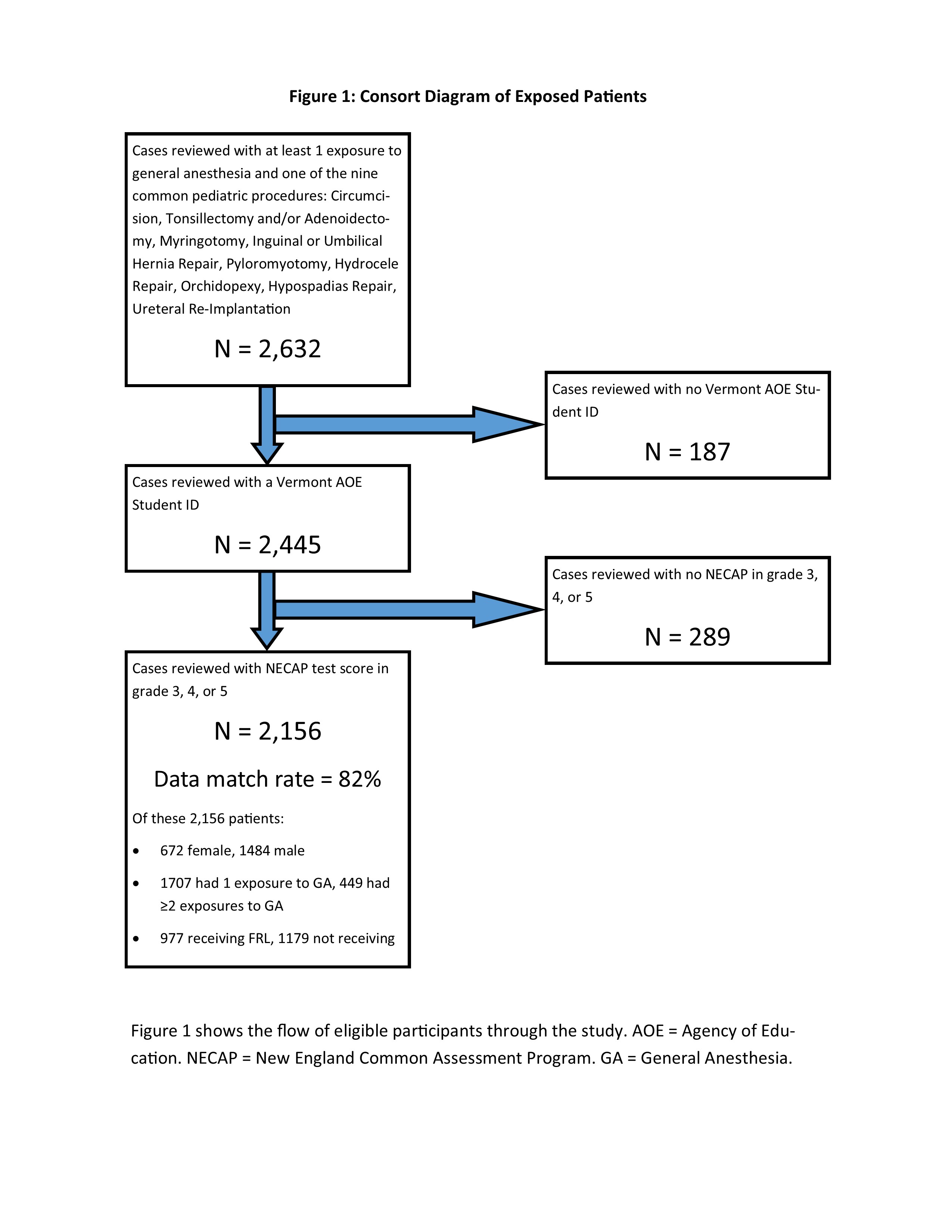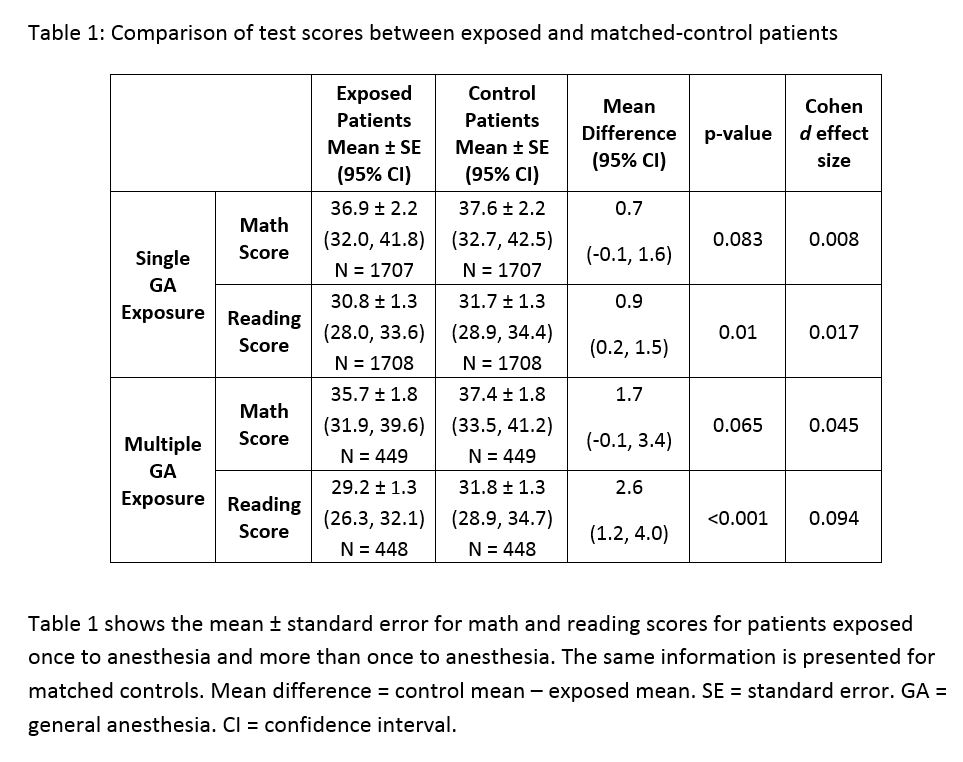OS1-133
Academic achievement after multiple exposures to early childhood surgery
1Williams R, 2Breidenstein M, 2Friend A, 3Whitaker E, 4Taenzer A
1University of Vermont, Burlington, Vermont, United states of america; 2University of Vermont Medical Center, Burlington, Vermont, United states of america; 3Nationwide Children's, Columbus, Ohio, United states of america; 4Dartmouth-Hitchcock, Lebanon, New hampsh, United states of america
Introduction: Current studies of pediatric anesthesia neurotoxicity are confounded by varying metrics of cognitive function and limited details of the anesthetic care of children, particularly for those requiring multiple exposures. This has made it difficult for pediatric anesthesiologists to accurately convey to the public the risks associated with anesthesia exposure at an early age. Performance on academic achievement testing (AAT) is a metric easily understood and highly valued by parents, the lay public, policymakers and other stakeholders. We designed an approach that allowed us to determine the effect size of multiple exposures to early childhood surgery on AAT performance in elementary school and for context compared these with the effect sizes of gender and socioeconomic status (SES). We previously used this approach to survey the Vermont school population and determined the effect size associated with an anesthetic accepted to be non-neurotoxic (spinal anesthesia) was 0.16.[1]
Methods: Working with the Vermont Agency of Education (VAOE), we produced an integrated database of educational and medical records, allowing for examination of the effects of exposure to surgery and anesthesia on AAT performance. We reviewed hospital records for 2,632 Vermont patients ≥32 weeks gestational age who had one of nine commonly performed surgeries (Figure 1) prior to age 36 months between 10/01/1995 and 12/31/2007. VAOE records included test score performance, gender and SES as determined by the need for free or reduced price school lunch (FRL). Gender, grade, and SES matched controls were selected in a case-control fashion. A mixed model ANOVA was used to compare exposed vs controls on raw test scores, adjusting for the effect of the strata, for cases with single and multiple exposures.
Results: 82% of hospital records were matched with VAOE data. Cohen’s d effect sizes between exposed and control patients were very small (Table 1). In the control population, females scored higher than males on Reading (d=0.17, p<0.001), but gender had no effect on math scores (d=0.01, n.s.). Lower SES Students performed significantly worse on both Math (d=0.74, p<0.001) and Reading (d=0.62, p<0.001).
Conclusions: There was no significant difference between math scores for one or more exposures to anesthesia compared to controls. The effect size on reading scores associated with one or more exposures to anesthesia is less than that of gender and less than the effect size previously observed by a non-neurotoxic anesthetic. Lower SES had a much larger impact on AAT than gender or exposure to anesthesia.
[1] Anesth Analg.2014;119(3):651-60.
 
Top













